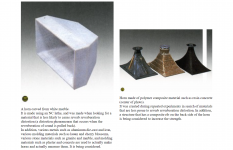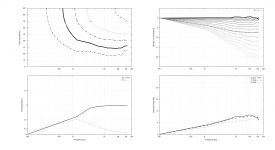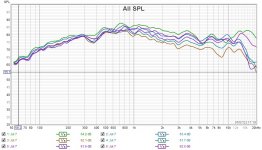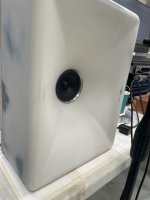Is there a scientific way to determine the optimum exit angle paramenter for a full range direct radiator?
Once the diaphragm breaks up, the real vibration pattern will be so complex that I doubt that the exit angle would have any meaning or that it could be optimized across a wide frequency range...
limacon - it would be very interesting to see measured polars on this - just maybe 15, 30 and 45...
//
//
No problem. Would be my pleasure!limacon - it would be very interesting to see measured polars on this - just maybe 15, 30 and 45...
//
AT LFs it should be straight, a tube, no angle at all. But then as the diaphragm begins to be non-rigid, there is no scientific optimal. It just becomes a mess.Is there a scientific way to determine the optimum exit angle paramenter for a full range direct radiator?
Preparing a fillable throat part -
(Yea, I've learned to use the slicer modifiers... 🙂)


It could be also printed like this, i.e. virtually hollow -

(Yea, I've learned to use the slicer modifiers... 🙂)
It could be also printed like this, i.e. virtually hollow -
Last edited:
Gloss black with a copper coloured driver mount / inlay , and copper back. Only possible with Ath4! 🙂
View attachment 1069326
I cannot stop thinking how nice a coaxial mid would be, with a paper cone profile according to an osse-formula and a compression driver. Insert in into a fitted waveguide, and there it is, the perfect three way.
I would love to see a measurement of the ONKYO GS-1. I came across these (pretty old) speakers recently and based solely on the appearance the horn looks surprisingly good... But I can't find any data.
The horn is an 'optimized' radial design. Not much data available.
In room response:

In room response:
Attachments
Last edited:
Judging by the profile, the horn will have a fairly steep rise in directivity with a maximum coverage angle of 90° horizontally at the low end to less than 50° above 10 kHz.
Hi
slowly proceeding and did first few sims using ath.
anyway: need a clear design target! 2 way with widest possible coverage by compression driver/horn.
Dcx464 or HF1440? Still a bit worried about the hf1440 resonance below 1kHz which was schown by Mabats first test….
slowly proceeding and did first few sims using ath.
anyway: need a clear design target! 2 way with widest possible coverage by compression driver/horn.
Dcx464 or HF1440? Still a bit worried about the hf1440 resonance below 1kHz which was schown by Mabats first test….
Last edited:
No question the B&C DCX464 could be crossed lower than the HF1440, simply due to it's greater Sd and more excursion potential.anyway: need a clear design target! 2 way with widest possible coverage by compression driver/horn.
Dcx464 or HF1440?
B&C also makes the less expensive 2" exit DCX50 coax that can be used down to the 300-400Hz range.
- Home
- Loudspeakers
- Multi-Way
- Acoustic Horn Design – The Easy Way (Ath4)






